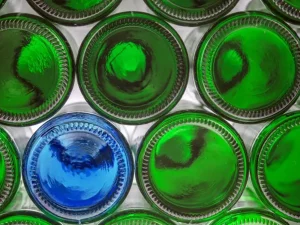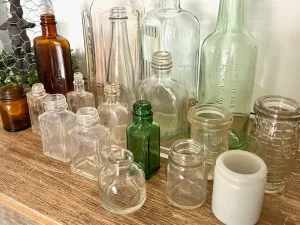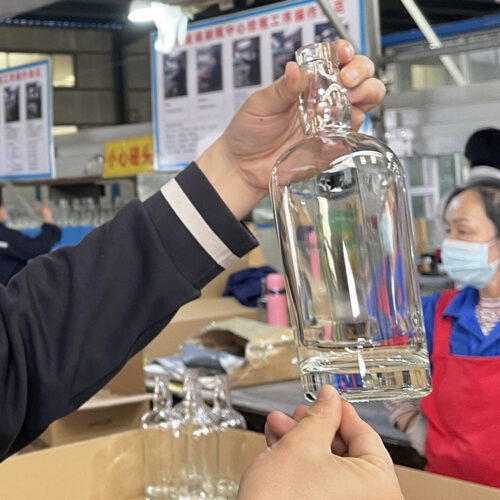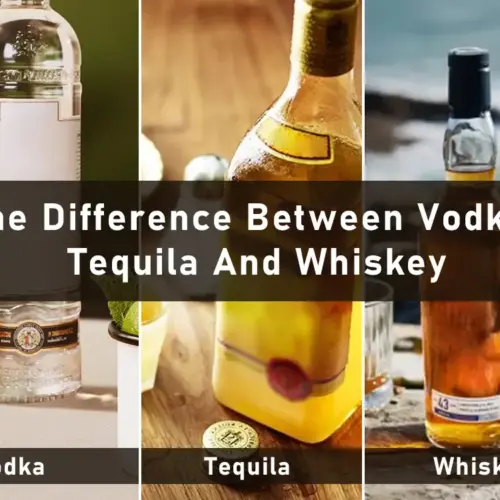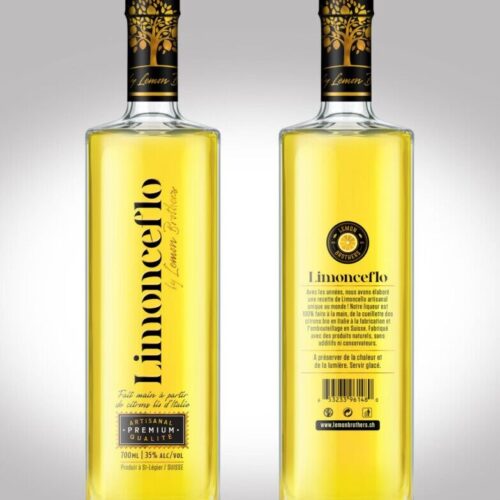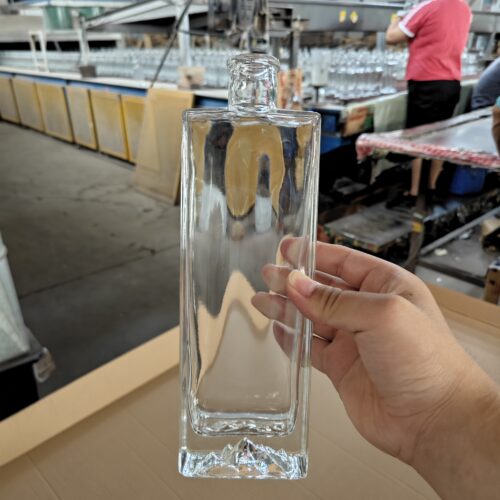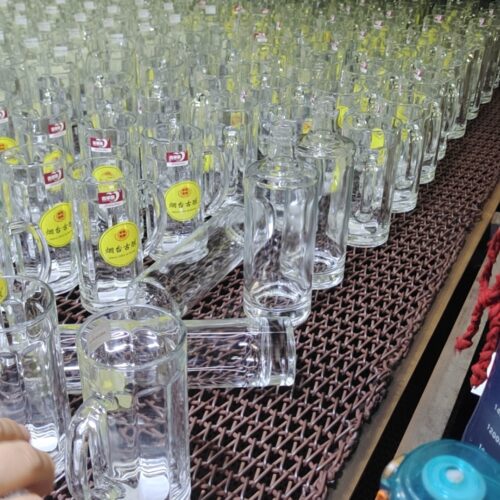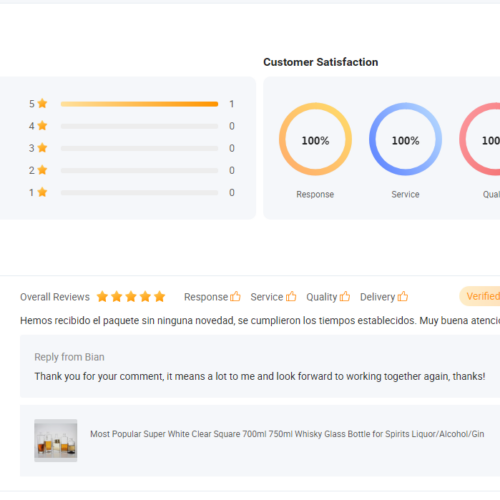Have you ever seen markings on glass bottles? These markings are standard in all liquor bottles, including whiskey, vodka, and wine. Some markings are engraved, while others are printed on the surface of bottles. However, no one knows the answer: What do the markings on bottles mean?
Many people consider these markings a meaningless part of the bottle designs. That’s not true, as these lines hold specific meanings. They act as the identity of the bottles and give us a lot of information about them. I know this question requires a detailed explanation. So, let’s dive in and explore everything related to this topic.
Overview of Marking on Bottles & their Purpose
Markings or lines on the bottom of the bottle represent different information. These can be the manufacturing date, brand logo, expiry date, mold code, etc. In simple words, these markings are the bottle’s identity. Bottles with both engraved and printed markings are available.
You may argue that the bottle’s label consists of all the information. So, why do manufacturers add markings? You’re right, but labels are not long-lasting. They can wear off and get removed due to different reasons. So, how would retailers or manufacturers identify the content of the battle if the label gets removed? That’s a hefty problem. Agreed?
Therefore, these markings are made on the surface of the bottle. Generally, these markings are engraved with high-end machines. However, some manufacturers print those lines and information. Here is the breakdown of the information that those marks highlight:
- Mold Number
- County of origin
- Bottles’ expiry date
- Certification Marking
- Manufacturer’s Name or Logo
- Content Volume or bottle capacity
There is no rigid rule set in stone regarding this information. The manufacturer can engrave any information that customers want to know. The list mentioned above shows the most common data that glass bottles come with. Remember, Some bottles also have barcodes, warnings, and instructions. Moreover, wine and liquor bottles also have alcohol content engraved on them.
Different Markings & Their Meanings
I hope that you now better understand the meaning of marking bottles. As I said, no fixed number of bottle linings or markings exist. They can have multiple markings to showcase more information and vice versa. In the section below, we will discuss the common types of marking and their meaning. So, let’s get moving!
1- Manufacturer’s Mark
Every manufacturer wants to stand out in the competition. So, they engrave their logo, symbol, and other details on the bottom of the bottles. It gives the bottle a unique identity. Remember that each brand has its own distinctive brand (logo). However, some counterfeit bottles could mislead the customers.
However, the engraving of the company’s official logo indicates authenticity. The customers can easily identify the authentic product by seeing the official logo on the bottle. The markings about the manufacturer can either be embossed or stamped. Some manufacturers also print their details on bottles. This helps them reduce the cost of these markings.
2- Mold Code Marking
These markings are generally crucial for manufacturers themselves. Why? Because they help ensure the quality of their bottles. Confused? Fret not! To get a better idea, you must understand how bottles are manufactured. Their manufacturing includes the filling of molten material into the molds. The bottles made are similar to the shape of the mold.
Each mold has a specific number. The manufacturer engraves or stamps this mold number on the bottom of the bottles. Wondering what the advantage of these mold number engravings on bottles is? Imagine if a bottle does not perform well during its usage. The bottle can have other issues, such as defects or irregularities.
The manufacturer immediately discovers the mold in which the bottle was made. This becomes possible due to the mold number printed on the bottle surface. So, the manufacturer does not use that specific mold for further manufacturing. It provides low-quality bottles. It helps them ensure the quality of the bottle. In some cases, they retire the mold where the defective bottle was manufactured. Generally, mold numbers consist of two digits.
3- Date Code Marking
These markings are one of the most important. They indicate the date of manufacturing and expiration of the bottles. These manufacturing dates of the bottles help the customer know the age of the bottles. Conversely, the expiry date is crucial for knowing how long a specific bottle will last.
Some bottles show the expiry date of the content present inside them. For example, have you seen the expiry date on syrup bottles made in the pharmaceutical industry? The expiry date engraved on those bottles represents how long that syrup will be good to take.
Quick Highlight: Moden manufacturers add the expiry date of content on the labels of the bottles. You can read that label to know how long the bottle’s content is usable. However, the expiry date engraved on the bottle is not for content. It is for the bottle itself.
4- Marking for Country of Origin
As I said earlier, some bottle manufacturers mention their country of origin. The most popular words for these markings are “Made in China or USA.” Manufacturers working in different countries offer varied quality. For example, glass bottle manufacturers in the USA provide better quality than those working in China.
So, they engraved their origin or manufacturing location. This will help them win the trust of the customers. You’ll see these markings more commonly on liquor bottles. For example, almost all Scotch whisky bottles come with “Made in Scotland.” Both these whiskeys and bottles are made in Scotland. However, you’re less likely to see such information on pharmaceutical bottles.
5- Marking for Content Volume or bottle capacity
These markings indicate the content quantity that a bottle can hold. For example, a standard-size liquor bottle has a content capacity of 750 ml. These bottles will have this amount (750 ml) engraved or printed. This is just one example: all bottles have a specific content-holding capacity.
So, manufacturers mention that capacity on their surface. Have you ever seen the ABV (alcohol by volume) written on bottles? You will likely see these ABV in wine and other liquor bottles. This indicates the quantity of alcohol that a bottle carries compared to other liquids. This allows customers to know the alcohol ratio in a bottle.
How can we forget the fill level engraved on the bottom of the bottle? This fill level indicates the maximum bottle level that can be filled with liquid. This fill-level marking is essential for those selling liquor, wine, or other products. This marking tells them to fill a specific level to avoid overfilling.
6- Standardization Marking
In European countries, the standardization marking is also common. The purpose of these markings is to comply with EU measurement standards. These standardization markings include two shapes on the bottles. Those are “M” and “ε” and they both indicate different information to the customers.
The “M” indicates the bottle has a content volume of less than 40 millimeters. This information is written on both bottles and packages. The second symbol, “ε,” indicates the bottle has content higher than 40 militarism. These signs are a kind of compliance with regulations in European countries. Apart from these signs, these bottles also mention the exact volume, i.e., 1 liter or 750 ml.
Some Uncommon Markings on Bottles
The section above discussed the most common markings and their meanings. That information is mentioned on almost all the bottles. However, few markings are very uncommon and rare. However, manufacturers still use them to some extent. Here is the list of those uncommon markings:
- Limited Edition Markings
- Collector’s Series Numbers
- Fair Trade Certification Marks
- Sustainability or Eco-Friendly Icons
- Safety or Warning Symbols Specific to Contents
Safety warnings or instructions are commonly printed on the labels of the bottles. Very few manufacturers print them on the surface of the bottles. Some bottles come with small green color symbols. This sign indicates the recyclability of the bottles. However, this symbol only comes with recyclable bottles.
Is There a Rule About What Info Manufacturers Must Engrave on Bottles?
No, manufacturers are not bound to engrave any specific information. It is all about their choice, preferences, and needs. However, bottles used in the pharmaceutical industry require engraving of the expiry date.
Engraving marking on the bottle is not mandatory. However, manufacturers add those lines to get noticed. They put their logo, instructions, and dates to ensure better understanding for customers. Some bottles come without any of those markings at all. So, the question arises: should manufacturers add those markings?
I would say a big YES! These markings provide beneficial information to customers. They reduce the chances of counterfeiting. Customers see the official logo and stamp and choose authentic bottles of specific brands. Moreover, these symbols and markings help us know the age and expiry date of the bottles.
Frequently Asked Questions
What do the symbols on bottles mean?
Symbols on the bottle provide useful information about it, including the expiry date, mold number, and volume or capacity. Those symbols or markings help the user understand the bottle.
What are the lines on bottles for?
The lines present on the glass bottle represent the filing limit. They are also called ‘fill lines’. The manufacturer fills the bottle with content to those fill lines, which helps avoid overfilling or flowing content.
How do you identify bottle markings?
Identification of the bottle is a straightforward task. Every bottle comes with markings that represent the following information:
- Manufacturer Details
- Expiry and Manufacturing Date
- Mold number and Volume capacity.
You can identify the bottle by seeing this information. You might notice lines on the bottles instead of letters or numbers. These lines indicate the limit to which a bottle should be filled. Overfilling results if you fill a bottle above this limit.
Conclusion
Still confused about markings on glass bottles? They provide all the information customers need to know. From the manufacturing date to expiry – all info helps customers make wise decisions when buying any bottle. Those markings indicate a different set of information.
Moreover, what information a bottle represents depends on the manufacturer. There is no hard and fast rule about putting specific details on the bottle. Hopefully, this article will answer all of the questions regarding bottle markings.

